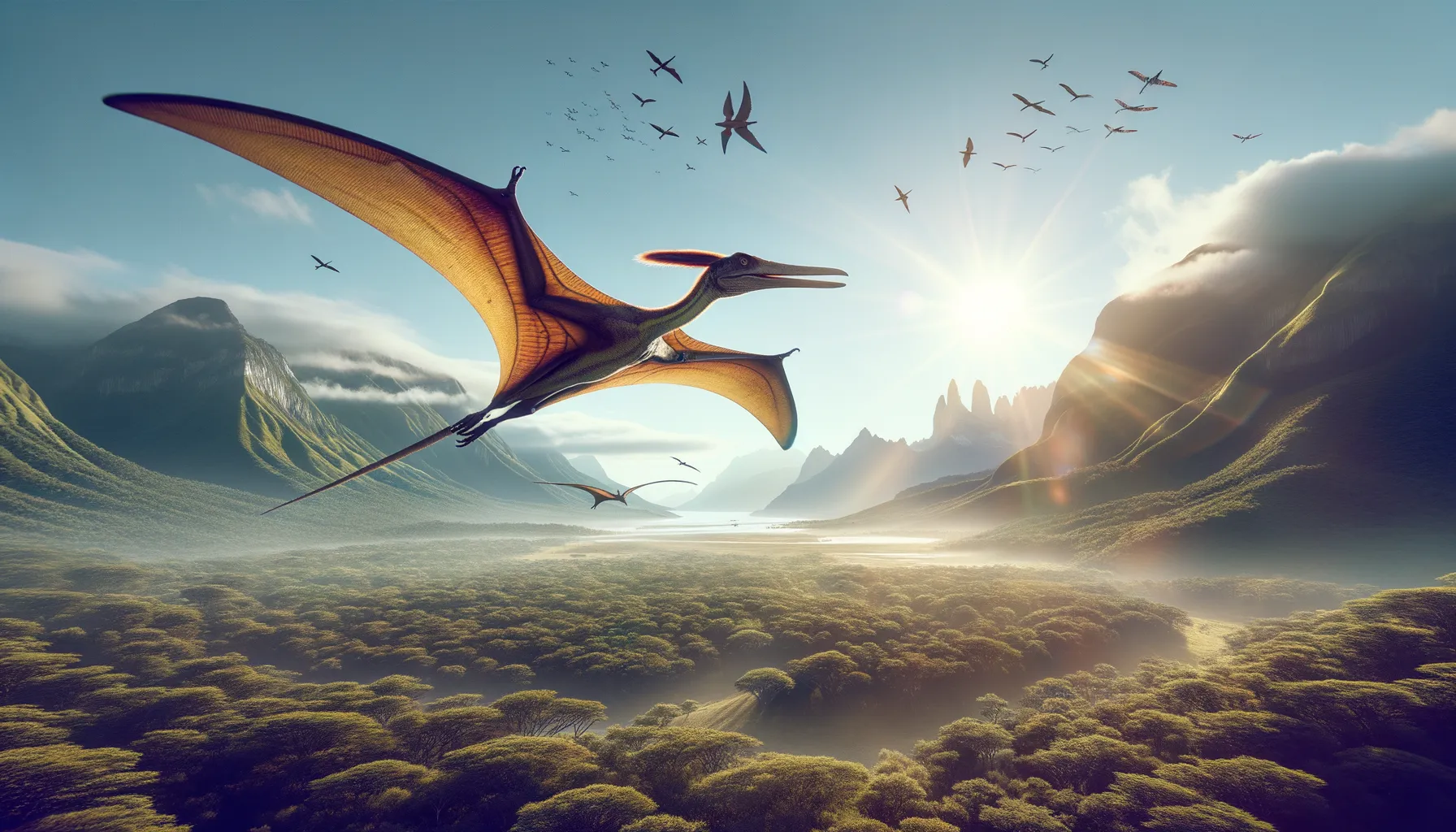
Herbstosaurus
Soaring predator of the Jurassic skies.
Period
Jurassic
Length
Estimated to be 3 meters long.
Height
Approximately 2 meters tall.
Weight
Possibly around 150 kg.
Herbstosaurus was a genus of pterosaur that soared through the Jurassic skies over Argentina. This creature, though often mistaken for a dinosaur, was part of a group of flying reptiles that thrived in prehistoric ecosystems. With its notable long wingspan, Herbstosaurus likely played a crucial role in navigating through forested regions, hunting for insects and small vertebrates, and contributing to the dynamic food chain of its time.
Diet
Herbstosaurus primarily feasted on insects and small animals. Its diet also might have included small vertebrates, providing it with essential nutrients.
Hunting
This pterosaur likely hunted by soaring over treetops and swooping down on prey. Its keen eyesight would have been crucial for spotting small, quick-moving meals.
Environmental challenges
Herbstosaurus faced environmental challenges like fluctuating climate conditions and potential predators. The competition for food sources among flying reptiles would also have been significant. Adapting to changes in flora and fauna was essential for its survival. Successfully navigating these challenges meant the species could thrive for millions of years.
Speed
Likely slow-moving, conserving energy.
Lifespan
Estimated at several decades.
First discovery
Discovered in 1969 in South America.
Fun Facts
- Herbstosaurus was a small, flying dinosaur that lived during the Late Jurassic period.
- This dinosaur is known primarily from fossil remains found in Argentina, highlighting its South American origins.
- Unlike many other prehistoric creatures, Herbstosaurus had a relatively lightweight construction, perfect for flight.
- The name 'Herbstosaurus' means 'Herbst's lizard,' named in honor of Dr. Herbst, who contributed to its discovery.
- Herbstosaurus belonged to a group of avian dinosaurs, placing it in the evolutionary lineage leading to modern birds.
- Its fossil record is quite fragmentary, meaning much of its life and adaptations are still a mystery to paleontologists.
- Despite its size, Herbstosaurus's adapted wings suggest it could glide fairly well over the ancient landscapes of the Jurassic era.
Growth and Development
Young Herbstosaurus might have grown quickly to avoid predators. Like other pterosaurs, they likely developed their flight muscles rapidly. The growth stages involved shedding lighter bones for flight efficiency. This quick growth ensured they reached adulthood faster, contributing to their survival.
Habitat
Herbstosaurus inhabited forested areas and coastal environments. These regions provided ample food and nesting sites. The proximity to water bodies also facilitated easy access to marine food sources. Such diverse habitats were essential for their varied diet and survival.
Interaction with other species
Herbstosaurus interacted with various pterosaur species and other Jurassic dinosaurs. Competition for food was inevitable among similar-sized predators. However, these interactions also meant potential opportunities for symbiotic relationships. This dynamic helped regulate and balance the ancient ecosystem.
Natural lifespan
Its natural lifespan extended over several decades.
Reproduction
Reproduction involved laying eggs in safe, sheltered locations. Nesting sites would be chosen carefully, often in clusters to ensure better survival rates. Young pterosaurs needed parental protection until independence. This reproductive strategy ensured species continuity.
Social behaviour
Herbstosaurus may have lived in small groups for protection. Social interactions likely increased hunting efficiency and reduced predation risk. Communication among individuals ensured coordination during flight. This social structure supported its survival and success.
Fossil locations
Distinctive fossils were found in Argentina. These findings provide valuable insights into its existence and habitat. The condition and location of the fossils help reconstruct its environmental context. Research continues to discover more about its geographical distribution.
